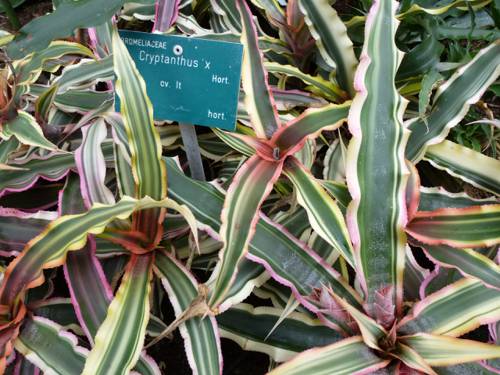
FAQ About Hybridization Techniques for Indoor Plants

What is hybridization in the context of indoor plants?
Hybridization in the context of indoor plants refers to the process of cross-breeding different species or varieties of plants to produce new cultivars with desirable traits. These traits can include improved aesthetics, increased resistance to pests and diseases, enhanced growth habits, or tolerance to varying environmental conditions. Hybridization often involves controlled pollination techniques and careful selection of parent plants to achieve specific objectives.

What are the benefits of hybridizing indoor plants?
Hybridizing indoor plants offers several benefits. It allows for the creation of plant varieties that have unique aesthetic qualities, such as new colors, leaf shapes, or flower forms. It can also lead to increased resilience against common pests and diseases, reducing the need for chemical interventions. Additionally, hybrids may be better adapted to indoor environments, requiring less maintenance or exhibiting improved growth under artificial lighting conditions.

What are the common techniques used in plant hybridization?
Common techniques used in plant hybridization include hand pollination, where pollen is manually transferred from the male part of one plant to the female part of another. This is often done using a brush or other small tool. Another technique is grafting, where a piece of one plant is joined onto another to grow together. Additionally, tissue culture techniques can be used to create hybrids in a laboratory setting, allowing for more precise control over genetic outcomes.

What challenges are associated with hybridizing indoor plants?
Hybridizing indoor plants can present several challenges. It often requires a deep understanding of plant genetics and the breeding process. Successful hybridization can be time-consuming, sometimes taking several generations to stabilize desirable traits. There is also the potential for unintended results, such as reduced fertility or viability of the hybrid offspring. Additionally, while hybrid plants may exhibit desired traits, they may also require specialized care to thrive.

Are there any specific indoor plants that are commonly hybridized?
Yes, several indoor plants are commonly hybridized due to their popularity and the demand for unique varieties. These include orchids, philodendrons, bromeliads, and various types of succulents such as Echeveria. Hybridization of these plants has led to a wide array of colors, patterns, and shapes that appeal to indoor gardeners.

How does hybridization affect the care requirements of indoor plants?
Hybridization can significantly affect the care requirements of indoor plants. Some hybrids may be bred for traits like drought tolerance or low light adaptability, which can make them easier to care for in indoor settings. However, others might retain or develop traits that require specific soil types, humidity levels, or temperature conditions. Understanding the heritage and specific needs of a hybrid plant is crucial for providing proper care.

Can hybrid indoor plants revert to their parent forms?
Hybrid indoor plants generally do not revert to their parent forms, but they may produce offspring that resemble one of the parent plants more closely, especially if the hybrid is not a stable cross. Over time and through successive generations, some traits may change, particularly if the plants are allowed to breed freely and seeds are used to propagate future generations.

Are hybrid indoor plants more resistant to pests and diseases?
Many hybrid indoor plants are bred specifically for increased resistance to pests and diseases, which can be a significant advantage for indoor gardeners. By selecting parent plants that exhibit strong natural resistance, hybrid plants can often withstand common problems like fungal infections or insect infestations better than non-hybrid varieties. However, this resistance can vary depending on the plant species and the specific hybrid in question.

Is it possible to hybridize plants at home, and if so, how?
Yes, it is possible to hybridize plants at home, although it requires patience and a basic understanding of plant breeding principles. The most common method for home gardeners involves hand pollination. This process includes selecting two plants to cross, transferring pollen from the male flower of one plant to the female flower of another, and then monitoring the resulting seeds or seedlings for desired traits. Proper labeling and record-keeping are crucial for success.

What is the difference between a hybrid plant and a genetically modified organism (GMO)?
The primary difference between hybrid plants and genetically modified organisms (GMOs) lies in the methods used to create them. Hybrid plants are produced through traditional breeding techniques, such as cross-pollination, within the same or closely related species. In contrast, GMOs are created using advanced genetic engineering technologies that can introduce genes from different species, potentially creating advantageous traits that are not achievable through standard breeding.

Do hybrid indoor plants produce seeds?
Hybrid indoor plants can produce seeds, but the offspring from these seeds may not consistently show the same traits as the hybrid plant. Because hybrids are crosses between different plant varieties, their seeds can exhibit a wide range of genetic variations, often resembling one of the parent plants more closely than the hybrid it came from. For this reason, hybrids are usually propagated through techniques like cuttings or division to ensure the desired characteristics are maintained.

What role does tissue culture play in hybrid plant production?
Tissue culture plays a significant role in hybrid plant production by allowing the cloning of plants under controlled laboratory conditions. This technique involves taking small pieces of plant tissue and growing them in sterile media, which can be manipulated to encourage the expression of specific traits or to stabilize new hybrids. Tissue culture is especially valuable for rapidly producing large numbers of identical plant clones, including hybrids.

Can hybrid plants have environmental benefits?
Hybrid plants can have various environmental benefits. They may require fewer chemical inputs such as fertilizers or pesticides due to traits like increased disease resistance or drought tolerance. By achieving improved growth efficiency and resilience, hybrids can potentially reduce the overall resource consumption in plant production. Moreover, creating plant varieties that thrive under indoor conditions may promote sustainable indoor gardening practices.

How long does it take to develop a new hybrid indoor plant variety?
The development of a new hybrid indoor plant variety can take anywhere from a few years to several decades, depending on the complexity of the traits being selected and stabilized. Initial crosses may quickly yield new forms, but breeders often require several generations to refine specific characteristics and ensure the hybrid is genetically stable. Additionally, thorough testing is conducted to evaluate the hybrid's performance and adaptability under various conditions.

What are some examples of popular hybrid indoor plant varieties?
Some popular hybrid indoor plant varieties include the Phalaenopsis orchids, which have been hybridized extensively to produce a vast array of colors and patterns. Another popular hybrid is the highly decorative Aechmea bromeliad hybrids, known for their vibrant flowers. Hybrid succulents, such as various Echeveria crosses, are also popular, offering unique shapes and colors appealing to indoor gardeners.

Are hybrid plants more expensive than non-hybrid varieties?
Hybrid plants tend to be more expensive than non-hybrid varieties due to the time and resources invested in their development. The process of breeding, selecting, and stabilizing desirable traits can involve several years of work, which is reflected in the price of these plants. Despite the higher cost, many gardeners find the unique traits and benefits offered by hybrids worth the investment.

What is the importance of controlled pollination in plant hybridization?
Controlled pollination is crucial in plant hybridization because it ensures the desired cross between selected parent plants, leading to predictable and consistent results. By carefully managing the pollination process, breeders can maximize the chance of transferring specific traits, such as color, size, or disease resistance, to the offspring. It also prevents unintended cross-pollination, which can introduce undesirable traits or hinder the stabilization of the hybrid.

Can hybridization affect a plant’s growth rate?
Hybridization can affect a plant's growth rate, depending on the traits selected during the breeding process. Some hybrids are developed to grow faster or to reach maturity more quickly, which can be beneficial for commercial growers and hobbyists looking for rapid results. Conversely, certain ornamental traits might be prioritized over growth rate, resulting in hybrids that grow at a pace similar to or slower than their parent plants.

Why are orchids a common subject of hybridization?
Orchids are a common subject of hybridization due to their immense popularity, diverse genetics, and commercial value. Hybridization allows breeders to combine various aesthetic traits, such as color, fragrance, and flower shape, resulting in beautiful and unique orchid varieties. Additionally, orchids can be challenging to grow and hybridization can introduce traits like increased hardiness or adaptability, making them more suitable for a broader range of environments.

Do hybrid plants require special propagation methods?
Hybrid plants often require special propagation methods to maintain their unique characteristics. Since seeds from hybrid plants may not breed true, asexual propagation techniques such as cuttings, division, or tissue culture are commonly used to replicate the parent plant’s desirable traits. These methods ensure that each new plant is an exact clone of the parent, preserving the hybrid's specific features and advantages.
